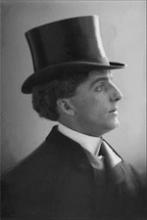Gentlemen, Please - Dealing with a Divided Market
Susan Crawford recently posted "The Gentlemen's Agreement," noting that major cable companies have divided the national market and tend not to compete with each other (they actually help each other in some circumstances).
Though bad for everyone not named Comcast or Time Warner, this division is actually a historic accomplishment:
Even J.P. Morgan couldn’t get independently-owned railroads to agree not to compete with one another in the late 19th century. Not that he didn’t try. In 1890 one of Morgan’s associates was excited by the prospect of a Western Traffic Association that would include a director from each railroad and set uniform rates: “Think of it - all the competing traffic of the roads west of Chicago and Saint Louis placed in the control of about 30 men!” But the effort fell apart because some of the independents insisted on cutting rates and invading each other’s territories.Cable and fiber-optic networks, as with railroads, have natural barriers to entry because the costs of building a network are very high; entrenched incumbents have nearly all the advantages should any competitor have the resources to surmount the barrier of sky-high upfront capital costs. In short, the market cannot self-regulate. We have a number of choices:
- Do nothing, let Comcast, et al. do as they please.
- Regulate: Hope the FCC or other Federal Agencies can stand up to the corporate lobbyists and regulate in the public interest.
- Provide a Public Option



